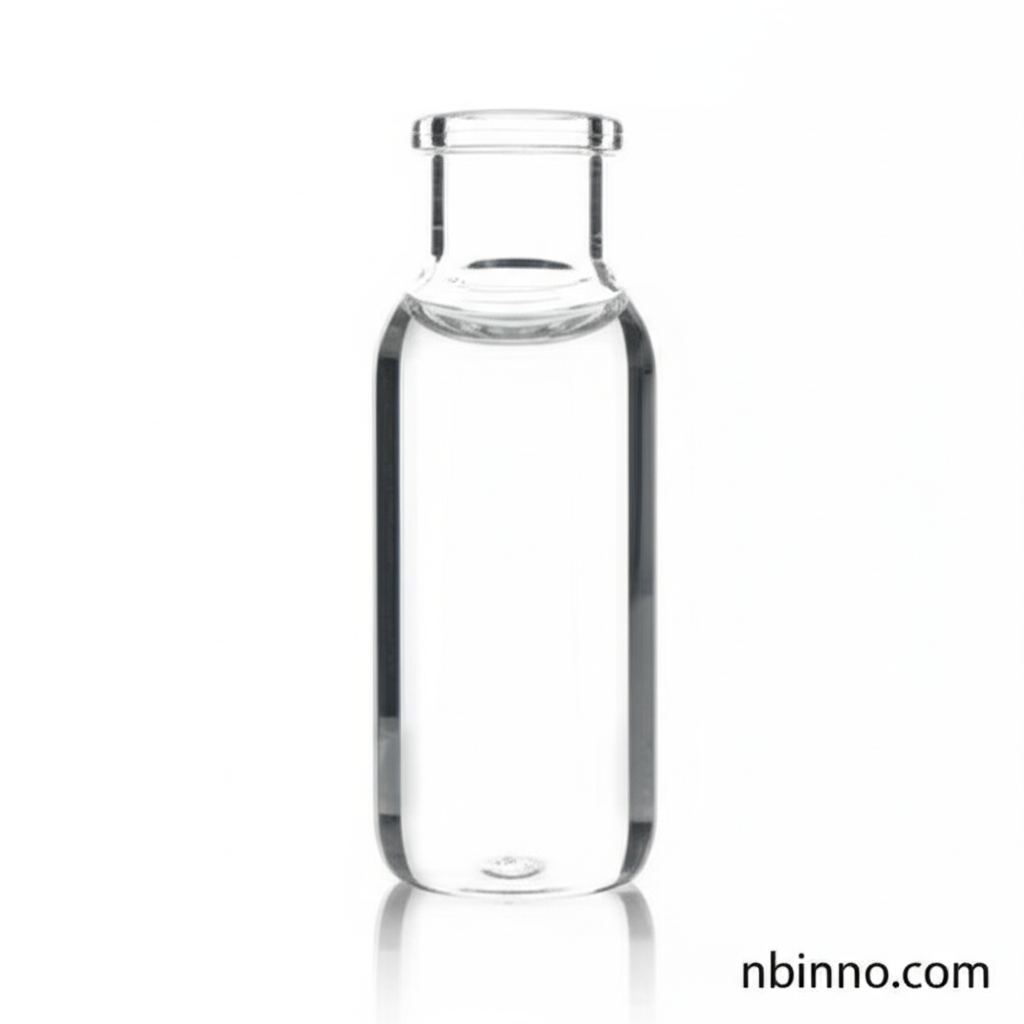2-Ethylhexyl Bromide: A Versatile Intermediate for Organic Synthesis and Specialty Chemicals
Explore the chemical properties, synthesis routes, and diverse applications of 2-Ethylhexyl Bromide (CAS 18908-66-2). Discover why this high-purity intermediate is crucial for industries ranging from pharmaceuticals to advanced materials. Learn about its reliability as a chemical supplier in China.
Get a Quote & SampleDiscover the Core Value of 2-Ethylhexyl Bromide

High-Purity 2-Ethylhexyl Bromide
As a leading manufacturer and supplier of 2-Ethylhexyl Bromide in China, we provide a chemical intermediate essential for numerous advanced syntheses. Our product, with a purity of ≥98.0%, ensures reliability in your organic synthesis processes, whether for research or large-scale production. We offer competitive pricing and stable supply, making us your trusted partner.
- Versatile Organic Synthesis Intermediate: Utilize this compound for critical alkylation reactions, forming ethers, thioethers, and more, crucial for various chemical products.
- High Purity & Reliability: With guaranteed ≥98.0% purity, our 2-Ethylhexyl Bromide meets stringent quality standards for demanding applications.
- Key Building Block for Specialty Chemicals: Essential for producing pharmaceuticals, agrochemicals, OLED materials, and functionalized polymers.
- Stable Supply from a Trusted China Manufacturer: Secure your supply chain with a dependable source for this vital chemical intermediate.
Key Advantages of Our 2-Ethylhexyl Bromide
Exceptional Purity for Consistent Results
Our 2-Ethylhexyl Bromide, synthesized with advanced methods like phosphorus tribromide bromination, achieves purity levels exceeding 98.0%. This high quality is vital for R&D scientists and formulators seeking predictable outcomes in complex organic synthesis and product development.
Broad Application Spectrum
This compound is a cornerstone for creating a wide array of products. Its utility as an alkylating agent makes it indispensable in the synthesis of pharmaceuticals, agrochemicals, and advanced materials like those used in OLED displays and photovoltaic cells.
Cost-Effective Sourcing from China
Leverage our position as a premier supplier in China to obtain 2-Ethylhexyl Bromide at competitive prices. We ensure efficient production and logistics, providing excellent value for your procurement needs and supporting cost-effective manufacturing.
Diverse Applications Driving Innovation
Organic Synthesis
As a crucial alkylating agent, 2-Ethylhexyl Bromide facilitates the introduction of the 2-ethylhexyl group in nucleophilic substitution reactions, forming ethers, thioethers, and esters for diverse chemical products.
Materials Science
It's utilized in functionalizing materials like graphene oxide to enhance dispersibility and electronic properties, and in synthesizing photovoltaic conjugated polymers for advanced solar cell technologies.
OLED Technology
This intermediate is key in synthesizing hole transporting materials, contributing to the development of more efficient and stable organic light-emitting diodes (OLEDs).
Pharmaceutical and Agrochemical Intermediates
Its reactive nature makes it a valuable precursor or intermediate in the synthesis of active pharmaceutical ingredients (APIs) and various agrochemicals.
